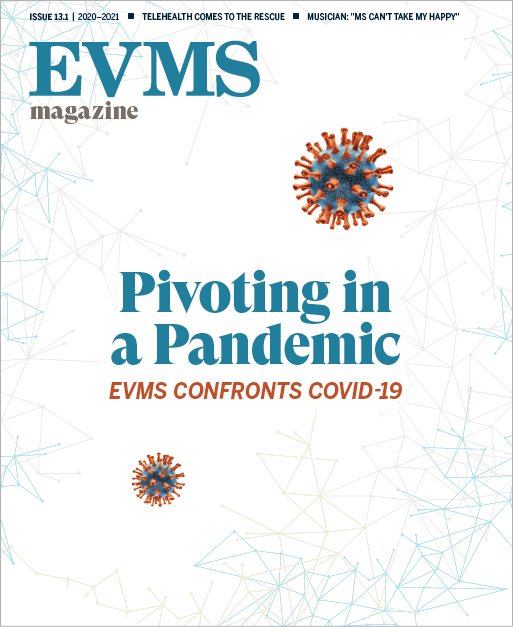
In late May, George Floyd died after being restrained by four Minneapolis Police Officers who suspected the black man bought cigarettes with a counterfeit $20 bill. A few days later, in his detailed response to that horrific act, Richard V. Homan, MD, President and Provost of EVMS and Dean of the School of Medicine, wrote these words to the EVMS community:
“We cannot call ourselves ‘healers’ and fail to take the necessary actions to eradicate the cancerous spread of racism. We have an affirmative duty to respond to racist speech and actions we encounter in both our personal and professional lives. Silence and inaction lead only to more senseless death and brutality, to a society crippled by the sickness of intolerance, discrimination and violence.”
Dr. Homan expressed similarly passionate sentiments following the 2019 disclosure of racist photos in a 1984 student yearbook. In overseeing an institution-wide response, he commissioned an independent Community Advisory Board for Diversity and Inclusion to review the culture of the school and make recommendations for continued improvement. In June, Dr. Homan announced that the board had completed its study.
Chaired by Gilbert Bland, President and CEO of the Urban League of Hampton Roads, the eight-member volunteer advisory board found a generally inclusive and supportive environment at the school. “Students strongly believe EVMS is a great place to attend medical school,” the reports states, “and that its community-oriented focus and increasing diversity in the student body distinguishes it from other medical schools. The positive sentiments by students should be highlighted to reinforce and strengthen the culture and the school’s reputation.”
Yet the report did say, “Faculty and staff have relatively low levels of trust in leadership and confidence in the future of EVMS, and more needs to be done to address trust among nonwhite and female employees.”
“This was not a surprise,” Dr. Homan says. “These are issues facing campuses across the country. This recommendation reaffirms our commitment to women and people of color in our workforce and our student body.”
Faculty, staff and students recognized the school’s diversity, equity and inclusion initiatives as improvements. But the report says they expect the school to do even more to recruit, enroll and support students from diverse backgrounds; attract and retain faculty of color; and close the gap in positive experiences between whites and people of color and between men and women.
The report also acknowledged that the 2020-2024 EVMS Strategic Plan, “Advancing Health Equity and Inclusion for Community and Academic Impact,” is providing needed skills and training throughout the school and making diversity, equity and inclusion a greater management priority. The plan — developed in summer 2019 by more than 100 EVMS faculty, staff, residents and students — already addresses some of the report’s recommendations.
EVMS has made steady progress in diversity, equity and inclusion since Dr. Homan became President in 2013 and hired Mekbib Gemeda, MA, as the school’s first Vice President of Diversity and Inclusion.
For example, in August 2019, EVMS admitted its most diverse class in its history. And in March 2019, EVMS received the Institutional Excellence Award from the National Association of Diversity Officers in Higher Education. The association presents the annual award to a single institution of higher education that has “demonstrated measurable progress in promoting and sustaining innovative diversity efforts within its campus community.”
But there is still work to be done, Dr. Homan says. “The hallmark of our school and our graduates is a focus on bettering our communities — and confronting racism and other barriers to inclusion is a key component of healing our communities.”
Read the Community Advisory Board for Diversity and Inclusion report.












